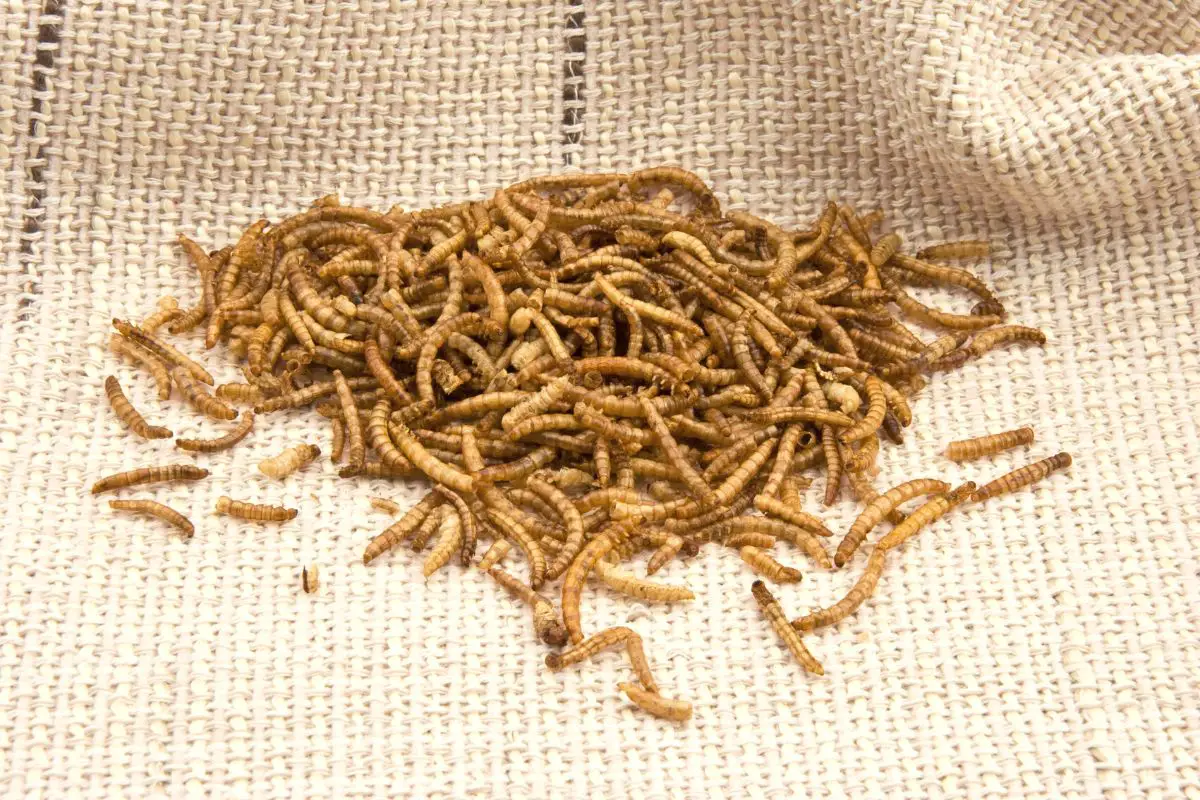Do Mealworms Bite | + Pet Feeding Safety
The idea of handling mealworms can be a bit off-putting. I guess that’s why I love Bokashi composting so much – [good] bacteria aside, nothing survives nor grows in there! Yay!
When I heard that mealworms have sharp teeth, I couldn’t help but contemplate how they might be able to bite you.
And worse, spread any disease they might be carrying to you. Admittedly, I tend to go on panic mode!
In the past, I have talked about mealworm composting. Now, in this article, I’ll be covering the question of ‘can mealworms sting you’.
And for your peace of mind, I can guarantee you that mealworms can’t sting, and are highly unlikely to bite.
Although mealworms do have mandibles that act like teeth, and which they use to hold and eat food, they’re probably won’t attempt to bite you.
On top of this, anecdotal reports of a mealworm attempting to bite a breeder show us that they’re not able to pierce the skin.
They’re simply too small!
What Are Mealworms Anyways?
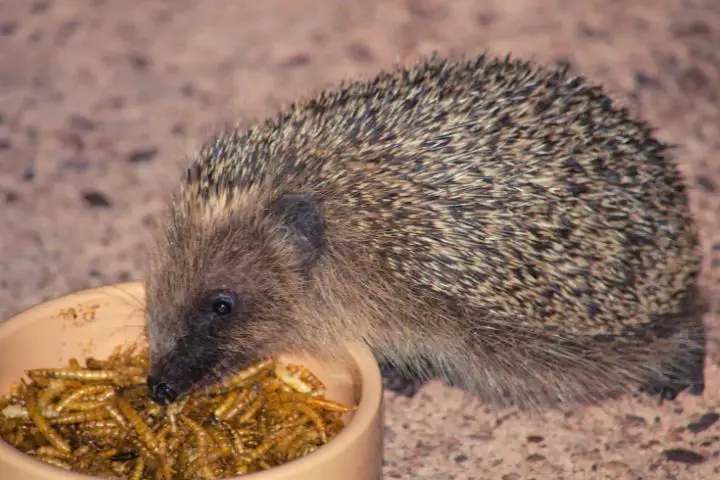
Surprisingly, mealworms are not worms, interestingly enough!
They’re the larvae of the darkling beetle.
The darkling beetle goes through four different stages before it completes its metamorphosis.
First, it exists as an egg of up to 500 eggs, which hatch after 19 days.
These eggs turn into mealworms, which, because they have inflexible exoskeletons, must molt as they grow.
After it’s finished growing, it turns into a pupa, where it cannot move at all.
From this stage, it turns into an adult darkling beetle.
Breeders typically keep the mealworms in a three-tiered system to separate the larvae, pupae, and beetles.
But wait:
Why do they keep them at all?
Two Interesting Uses for Mealworms
Hint: mealworms are high in protein.
Yes, people do eat them!
Mealworms As a Tasty Snack (Arguable, I know)

In Southeast Asia and many other Asian countries, mealworms are often sold in food markets.
To ensure that they are free from parasites and harmful bacteria these worms must be boiled beforehand.
They can be eaten as is or added to a meal for some added nutrition.
(Sounds… delicious?)
Mealworms As Pet Food
Alternatively, if eating mealworms (or bugs in general) isn’t your thing.
Then you could just feed them, live, to your little buddies.
These worms make a great meal for tarantulas, although they may become too small as your tarantula grows. [Full disclosure: I don’t have tarantula pets, but I know people who love to keep ‘unorthodox’ pets.]
It depends on the species you opt to keep.
They also make great food for different reptiles such as iguanas.
They can also be a treat as part of a well-balanced diet for your birds.
But, wait, are they safe to feed to your pets?
(Did you know: mealworms can even be used in composting during a process known as vermiculture. However, they are different from a traditional composting worm farm!)
Disease & Mealworms
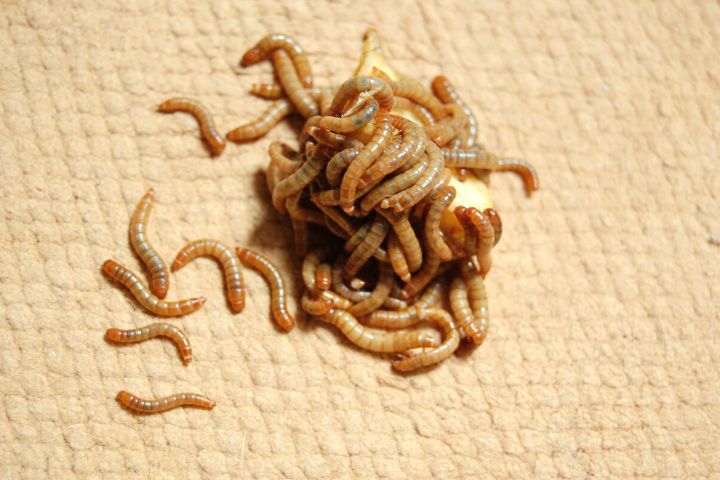
Mealworms, like any other insect or animal, can be carriers of different forms of bacteria.
This isn’t to say that if you have them in your backyard you’ll get sick. Nor does it mean that if you fed mealworms to your pets, they’ll get sick.
Animals can often tolerate a lot more than we can.
But if you’re concerned, make sure to purchase from a mealworm breeder that can assure that the worms have been tested for parasites and bacteria.
Will Mealworms Bite My Pet?
Now, we know that mealworms are unlikely to bite humans.
And even if they do, they’re just not strong enough to do any harm.
But what about your pet? Do mealworms bite leopard gecko?
What about lizards? Do mealworms bite lizards?
Well, again they’re not likely to be able to do any real damage.
And will likely be killed long before they get the time to make battle strategies.
And, as natural prey, they will attempt to hide long before they attempt to attack.
You might be wondering: “Can you say the same thing about superworms?”
Superworms vs Mealworms
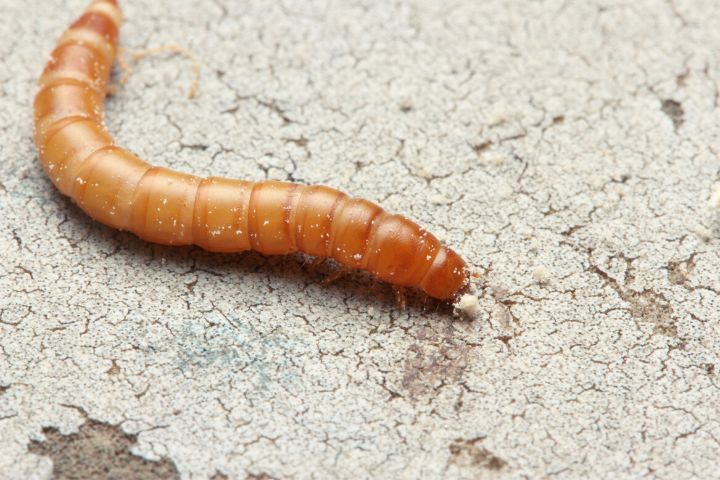
Okay, I don’t think that anyone wants to hear the words “super” and “worm” combined.
But, unfortunately, it’s a reality.
While mealworms can grow to about 0.7 inches in length:
The superworm can grow to up to 2.25 inches!
That’s over triple the length of the largest mealworms.
With this added size, can they bite though?
Well, these larvae (yes they’re also not officially worms) can bite.
They can also pinch human skin, which is quite uncomfortable.
They may even be able to bruise and even draw blood from small reptiles.
They also have a tiny pin on their backs to use as a defense.
So I’d suggest only feeding these to your pets when they’re much bigger than these larvae.
Before that, stick to mealworms and other smaller prey.
Mealworms Are Nothing To Worry About (Mostly)
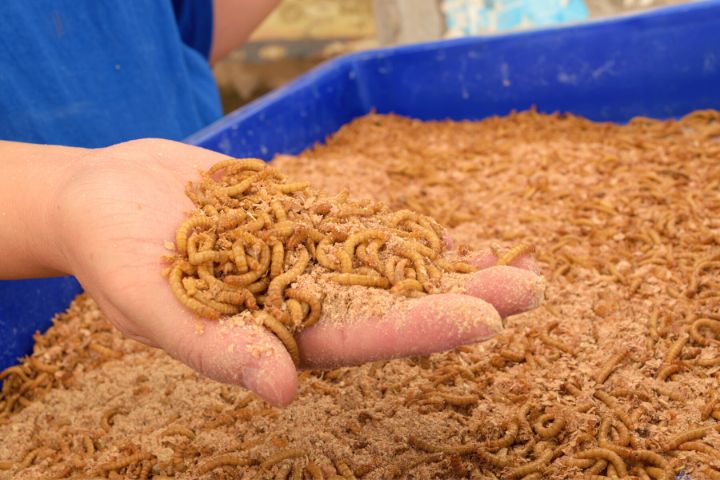
Mealworms are, overall, quite harmless.
The larger common feeder larvae, superworms, may be able to do some damage.
So use discretion when opting on what to feed to your lizard/gecko/tarantula/birds.
They are also not likely to spread disease, but if you opt to eat them yourself, boil them first.
Though, I don’t imagine this is the first choice for most of the readers here.
Frequently Asked Questions
Does a mealworm bite hurt?
No, a mealworm bite will not hurt. Anecdotal reports from breeders show us that mealworms aren’t even able to pierce the skin.
Can mealworms sting you?
A mealworm might certainly try to bite you, but it’s not likely. They don’t sting, they bite. And it never hurts even if it does happen.
What happens if you touch a mealworm?
Mealworms are safe to touch and handle. Afterward, you’ll want to wash your hands with soap. But other than that, there’s nothing to worry about.

